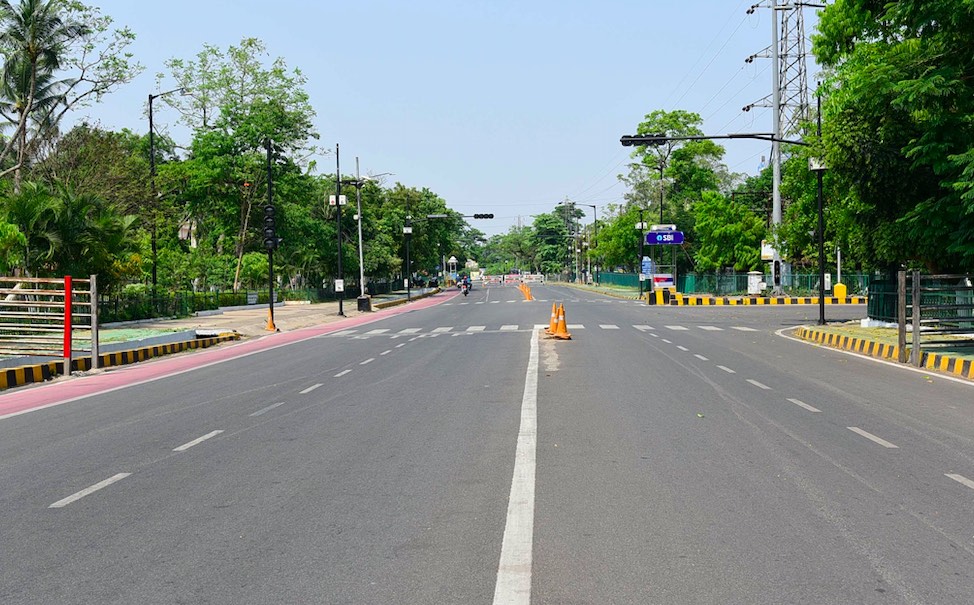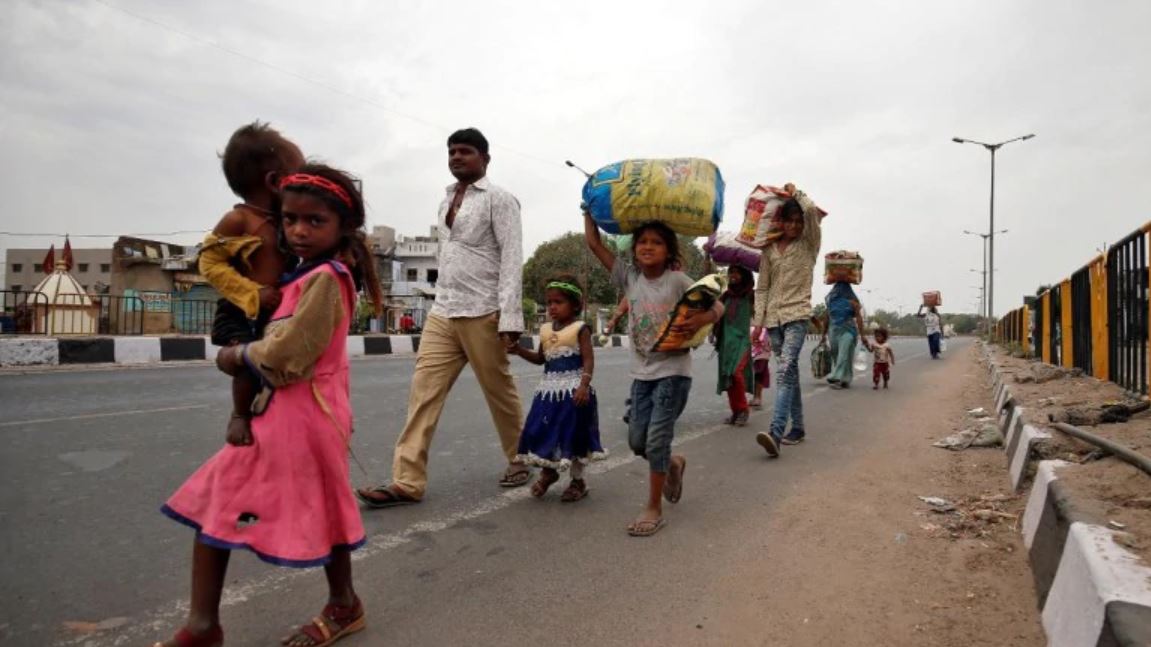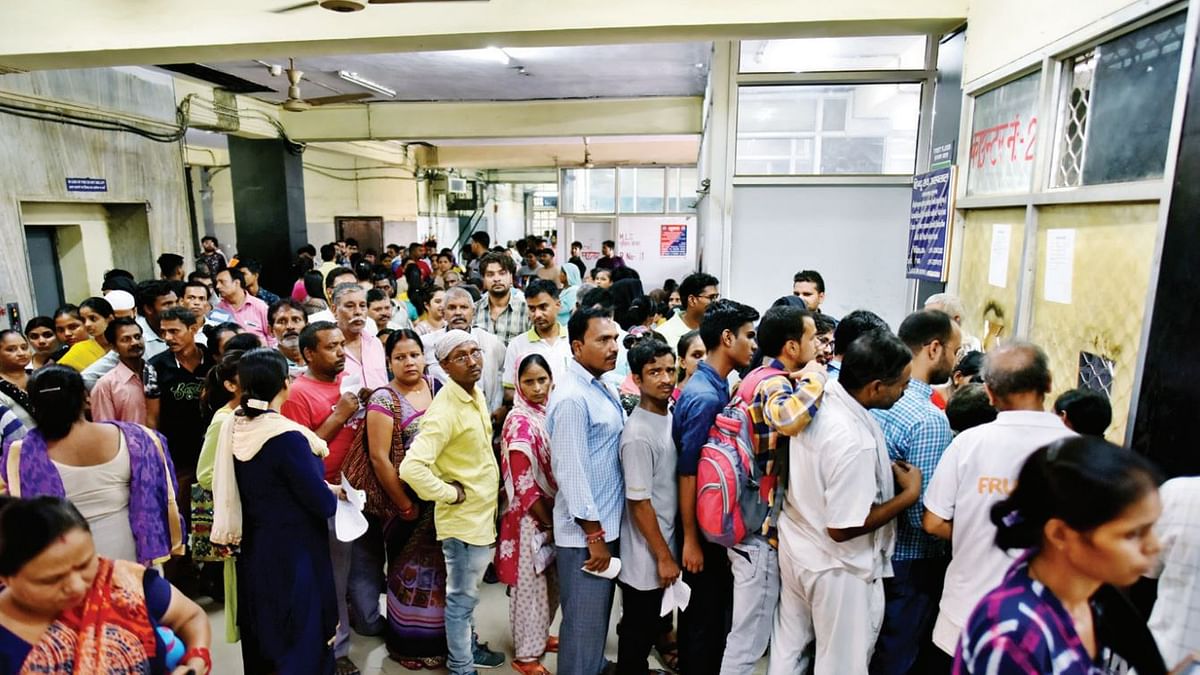Prof. Raj Kishore Panda
Lockdown as a strategy to contain the spread of the corona pandemic is questioned by many. More particularly looking at the high rate of transmission of the disease including rise in mortality rate since the opening of the economy (with lockdown continuing at state/regional level)for economic activities from 1st June, opinion is gaining ground against the potentiality of lockdown as a measure to control the spread of the virus. Hence focus has gradually shifted from this behavioural intervention to providing health facilities to curb the disease.
 However India being a large populous country with underdeveloped public health care system , there is need for strengthening the public health to meet the eventualities if there happens to be community spread of the virus. Realizing the crucial role of public health in the present context , the Prime Minister has recently announced Rs 15000/-crore towards building the health infrastructure. But as it is largely viewed the public health care suffers from long policy neglect and there is need for a structural reform to make this system contribute quality service to the people along with fighting covid-19.
However India being a large populous country with underdeveloped public health care system , there is need for strengthening the public health to meet the eventualities if there happens to be community spread of the virus. Realizing the crucial role of public health in the present context , the Prime Minister has recently announced Rs 15000/-crore towards building the health infrastructure. But as it is largely viewed the public health care suffers from long policy neglect and there is need for a structural reform to make this system contribute quality service to the people along with fighting covid-19.
On this issue let me explain how health- a basic element for a better human living remained neglected in the development policy all through the post-independent India.
 With the country getting independence, contrary to the expectation that health be treated as a basic human right, the framers of the constitution placed health under the Directive Principles of State Policy with the provision of health care the responsibility of the state governments. Accordingly, the states were also made responsible for raising the level of nutrition and standard of living of their people and improvement in public health remained their primary duty. By this way health as a basic human right was compromised from the beginning.
With the country getting independence, contrary to the expectation that health be treated as a basic human right, the framers of the constitution placed health under the Directive Principles of State Policy with the provision of health care the responsibility of the state governments. Accordingly, the states were also made responsible for raising the level of nutrition and standard of living of their people and improvement in public health remained their primary duty. By this way health as a basic human right was compromised from the beginning.
Besides, over the planned period of development, emphasis was laid on accumulation of capital through large-scale investment in capital goods industries, infrastructure etc. Industrial growth was the keyword of development. The social sectors like health and education were considered as low priority areas. The states could not mobilize adequate resources since agriculture income was exempted from taxation. This led states to reduce expenditure and it fell largely on social sectors like health and education. All along public expenditure on health (centre + states) continued to remain at around 1 percent of GDP.
 In recent years there has been marginal increase in expenditure on health care at 1.3 percent of GDP between 2008-2015 which has further increased to 1.4 percent in 2016-17. However, this is less than world average of 6 percent. The National Health Policy, 2017 has proposed to raise it to 2.5 percent of GDP by 2025. Since the beginning of 1980s the Indian economy witnessed a higher pace of economic development leading to better living standards of the people , particularly those residing in urban areas. As such under the influence of middle class urban elite, government’s policy focused on establishing hi-tech and super speciality hospitals in the country under private sector.
In recent years there has been marginal increase in expenditure on health care at 1.3 percent of GDP between 2008-2015 which has further increased to 1.4 percent in 2016-17. However, this is less than world average of 6 percent. The National Health Policy, 2017 has proposed to raise it to 2.5 percent of GDP by 2025. Since the beginning of 1980s the Indian economy witnessed a higher pace of economic development leading to better living standards of the people , particularly those residing in urban areas. As such under the influence of middle class urban elite, government’s policy focused on establishing hi-tech and super speciality hospitals in the country under private sector.
This led to rapid growth of uncontrolled and unregulated private health sector in the country. In the 1990s with the adoption of economic reform, a major shift in government’s health care policy towards developing tertiary care resulting massive investment in corporate hospitals, diagnostic centres etc, was noticed. As a result whatever little control the government had on private health care sector was done away with and the government became facilitator to private health sector rather than provider of health care in the country. Taking the available data, today private health care caters to 70 percent households in urban areas and 63% in rural areas.
 A weak public health system which does not function well in a normal situation cannot suddenly generate surge capacity when challenged by a health emergency. This suggests adequate investment in creating a public health system that can withstand any kind of health emergency. Besides, as studies reveal the private health care sector suffers from excess capacity and this needs to be strategically used by the government. There is robust evidence that investment in primary health care pay rich economic dividends. A re-thinking on the development policy of the health care is the need of the hour.
A weak public health system which does not function well in a normal situation cannot suddenly generate surge capacity when challenged by a health emergency. This suggests adequate investment in creating a public health system that can withstand any kind of health emergency. Besides, as studies reveal the private health care sector suffers from excess capacity and this needs to be strategically used by the government. There is robust evidence that investment in primary health care pay rich economic dividends. A re-thinking on the development policy of the health care is the need of the hour.
(Prof. Raj Kishore Panda is an economist and the former Prof. of Economics, Utkal University, and former Director, Nabakrushna Choudhury Centre for Development Studies, Bhubaneswar.)




















